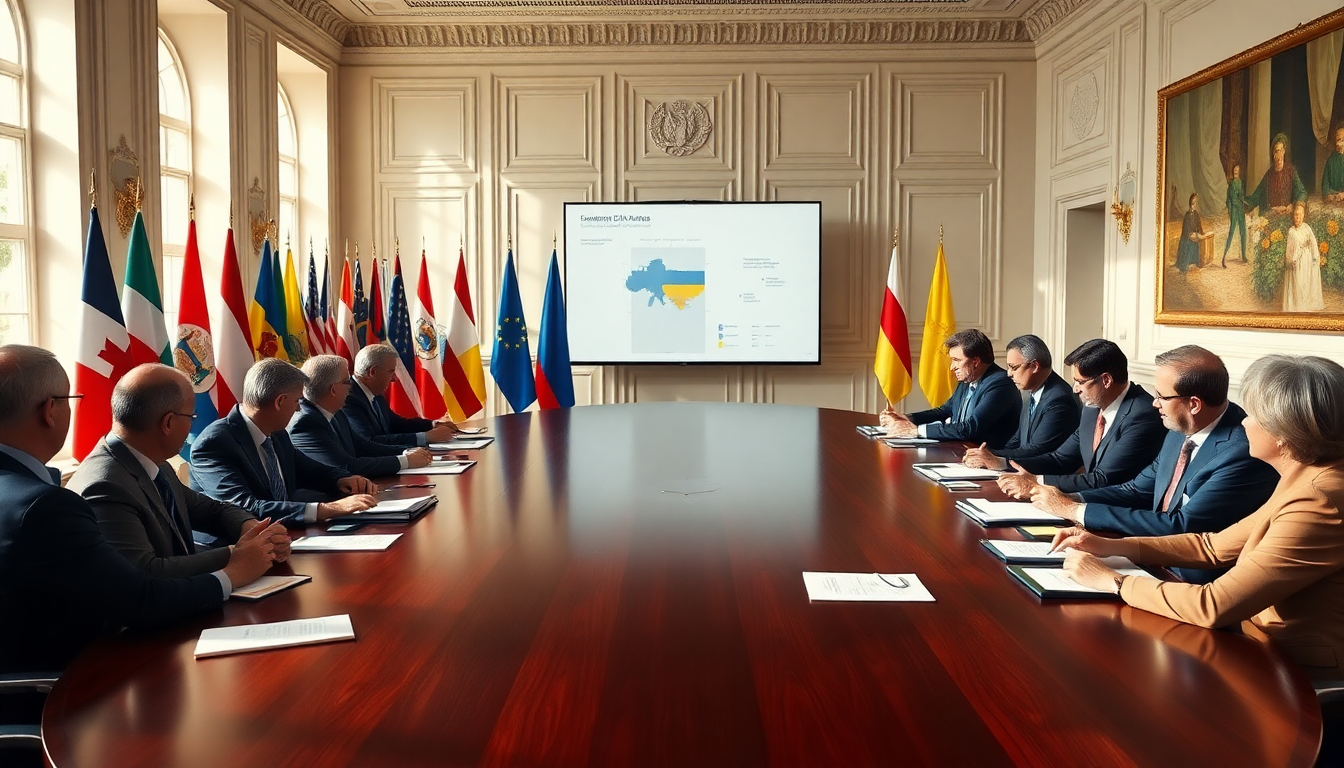Table of Contents
The ongoing conflict in Ukraine has captured the world’s attention, sparking numerous diplomatic efforts to bring about peace. Recently, former US President Donald Trump brought together Ukrainian President Volodymyr Zelenskyy and key European leaders to brainstorm strategies for ending the war with Russia.
This meeting comes on the heels of a previous summit where Russian President Vladimir Putin dismissed proposals for a ceasefire, instead demanding territorial concessions from Ukraine. The intricate dynamics of these discussions highlight just how complex international diplomacy can be, especially amid active military conflict.
Overview of the Diplomatic Meeting
During a pivotal meeting at the White House, President Trump made it clear that he stands firmly behind Ukraine, stressing the importance of working closely with European allies. He referred to these nations as the “first line of defense” against Russian aggression and reassured Zelenskyy of continued US military support.
This support is particularly crucial as Zelenskyy revealed that Ukraine is ready to invest a staggering $90 billion in US military equipment, showcasing their serious commitment to national defense.
The atmosphere of this meeting was a breath of fresh air compared to previous encounters between Trump and Zelenskyy, which had often been tense.
Trump even complimented Zelenskyy’s outfit, indicating a more cordial spirit that could pave the way for better cooperation. Zelenskyy responded enthusiastically to Trump’s assurances of military backing, viewing it as a significant leap forward in Ukraine’s fight for sovereignty and security.
Strategic Considerations for Peace Negotiations
As discussions unfolded, the idea of a ceasefire came into play. However, Trump suggested that it might not be essential for negotiations to progress. He pointed out that previous conflicts have been resolved without formal ceasefires, implying that continuous dialogue could be just as effective, even during active hostilities.
This approach reflects Trump’s pragmatic negotiation style, which often prioritizes results over formal agreements.
Zelenskyy, in contrast, urged for a truce to create a safe environment for democratic processes within Ukraine, stressing the importance of having secure conditions to conduct elections. His focus on strengthening the Ukrainian military, along with a call for Western support in training and intelligence, underscores the vital link between military readiness and political stability in the region.
Future Prospects and Challenges Ahead
The current state of negotiations reveals a tangled web of interests. Both Zelenskyy and Trump recognize the need for a delicate approach to discussions about territorial exchanges. The prospect of trading territory is a hot-button issue, with both leaders agreeing that any decisions should ultimately reflect the will of the Ukrainian people. This democratic principle is fundamental to the negotiations, despite the ongoing military pressures.
As we look to the future, the situation remains unpredictable. With European leaders gearing up for more talks, the focus will likely continue to be on unity against Russian aggression and the pursuit of a peaceful resolution. The involvement of European powers is crucial; they play a key role in balancing support for Ukraine while considering the strategic interests of NATO and the EU.
In conclusion, while the road to peace in Ukraine is riddled with hurdles, the recent diplomatic efforts demonstrate a dedication to finding a resolution that honors Ukraine’s sovereignty and the broader geopolitical context. The coming steps will be critical as all parties navigate the intricate realities of war and diplomacy. What will the next chapter hold for Ukraine? Only time will tell.





